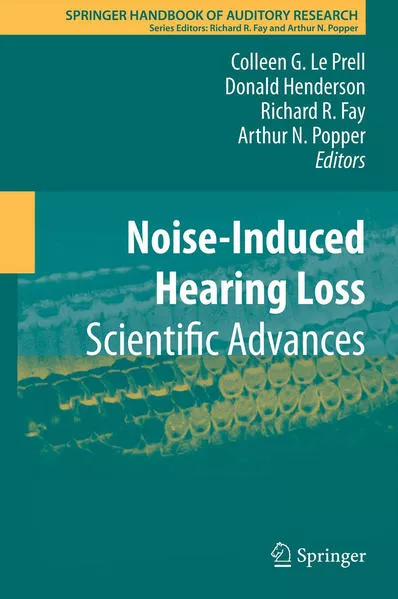Springer Handbook of Auditory Research
Noise-Induced Hearing Loss
Chronologie aller Bände (1 - 2)
Die Reihenfolge beginnt mit dem eBook "Auditory Computation". Wer alle eBookz der Reihe nach lesen möchte, sollte mit diesem Band von Harold L. Hawkins beginnen. Mit insgesamt 2 Bänden wurde die Reihe über einen Zeitraum von ungefähr 2 Jahren fortgesetzt. Der neueste Band trägt den Titel "Noise-Induced Hearing Loss".
- Anzahl der Bewertungen für die gesamte Reihe: 2
- Ø Bewertung der Reihe: 5
- Start der Reihe: 15.09.2011
- Neueste Folge: 27.10.2013
Diese Reihenfolge enthält 2 unterschiedliche Autoren.
- Band: 6
- Autor: Hawkins, Harold L.
- Anzahl Bewertungen: 0
- Ø Bewertung:
- Medium: E-Book
- Veröffentlicht: 06.12.2012
- Genre: Sonstiges
Auditory Computation
- Band: 40
- Autor: Le Prell, Colleen G.
- Anzahl Bewertungen: 1
- Ø Bewertung: 5.0
- Medium: Buch
- Veröffentlicht: 05.10.2011
- Genre: Liebesroman
Noise-Induced Hearing Loss
Exposure to loud noise continues to be the largest cause of hearing loss in the adult population. The problem of NIHL impacts a number of disciplines. US standards for permissible noise exposure were originally published in 1968 and remain largely unchanged today. Indeed, permissible noise exposure for US personnel is significantly greater than that allowed in numerous other countries, including for example, Canada, China, Brazil, Mexico, and the European Union. However, there have been a number of discoveries and advances that have increased our understanding of the mechanisms of NIHL. These advances have the potential to impact how NIHL can be prevented and how our noise standards can be made more appropriate.

